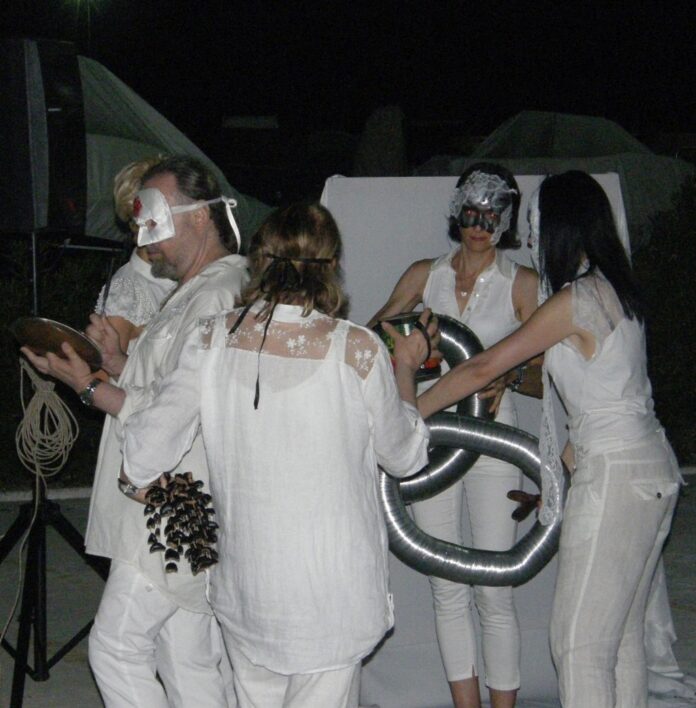The ardent Vitaldo Conte, while playing in the role of Vitaldix (his avatar in his body performances) is urged by his troubadourical love poems that he covers with his symbolical white of art. His evocative performance starts with futuristic sonorities in order to cut with the schemes of his traditional poetical singing. Then it is translated into a linguistic tale.
This tale is organized with ritual energetic messages. That’s why his performative action’s result is to provide the user with messages through gestures and sonorities evoking a ritual dance where action prevails on sign and word. The purpose is to bring back to light the esoteric primitive shapes.
In tune with Nietzsche’s spirit and Hillman’s psychoanalysis, Vitaldix shows that you can build a path by evoking but without using words and signs. The shapeless man is the artist or the literate man who can collect the experience of many identities in his lectures and interpretations of life. That’s from more points of view and according to several self-identification models.
In the artist, in the literate man, but also in simple and sensible people, the emerging origins contained in the dancing god Pan’s Dionysiac message have the value of a “background noise”. This noise rejoins to an origin and becomes a reactivated contrast that can’t be abandoned anymore. The evocative ritual of the performance is its proof. And it’s not important that man lives in this endless succession of shape-loosing and identity presence. It is the condition from which Nietzsche observed humanity’s “Birth of Tragedy”.
Everything is a masking, an assumption of an identity and then another one…as many are the moments of thought representation (or dedicate to action) in a day of our existence. It doesn’t matter anymore even to wonder if the symbol gains the significance of white for wedding or of a union, like in the West, or for a tragic event and separation, like in the east. In this world, we always dance between inebriation and identity, and the ritual ends when our own energy is exhausted.
Only then the drama (from greek dran, action), be it comic or tragic, ends as ritual. Also our mind’s active symbolic function ends, transferring itself in every life representation after theatre. In that moment of Dionysiac inebriation, when we are possessed by the God of dance, we reach the acme and understand the meaning of our daily experiences, but then we can’t distinguish anymore if the characters are real or thought’s masks.
The ritual action of performance, through the evocation of Dionysus, overwhelmingly enters into life, becoming an activity of memory that makes a shapeless experience alive, always affecting us. It connects mind representation to real life and makes the meaning of shapes and actions more delicate. The lovers of narration art don’t care of possible differences: they constantly dance and narrate with their characters but also with their unidentifiable masks, exactly like Vitaldix does.








